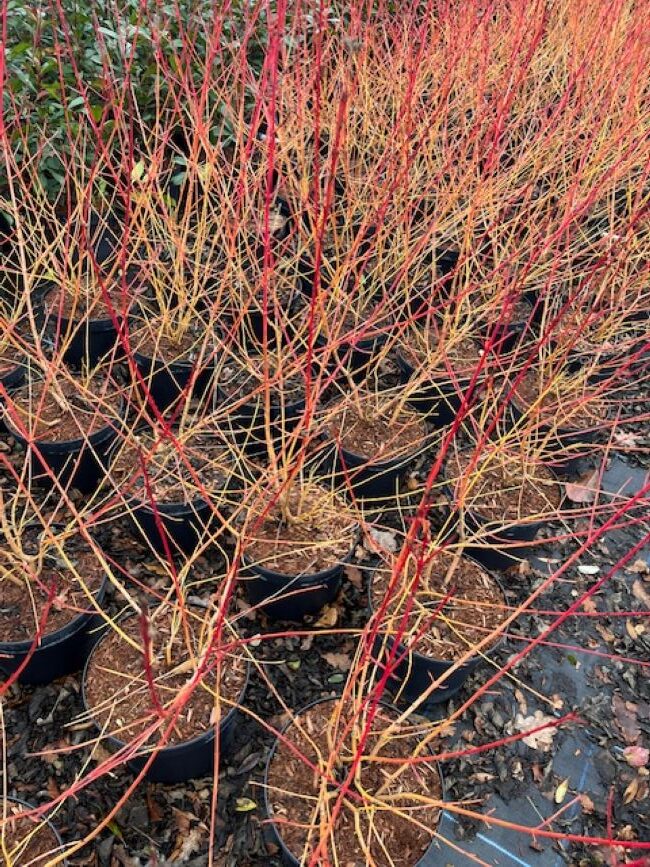Description
Cornus sanguinea ‘Midwinter Fire’ is a striking deciduous shrub famed for its radiant winter stem colors. The bare stems transition from yellow at the base through orange to deep red at the tips, making a spectacular display in the colder months. Reaching approximately 1.5–2.5 meters (5–8 feet) in height and spread, it bears elliptical green leaves in spring and summer, turning shades of yellow and orange in fall. Clusters of small white flowers appear in late spring, followed by dark berries that can attract wildlife.
Soil type
- Ideal soil: Fertile, humus-rich, and well-drained. Cornus sanguinea adapts to heavier soils if drainage is not compromised.
- pH range: Prefers slightly acidic to neutral (around 5.5–7.0).
- Moisture: Consistent moisture levels encourage lush growth and vibrant winter stems.
Location
- Light: Full sun to partial shade; full sun will produce the most intense stem color.
- Hardiness: Hardy in USDA Zones 4–7 (or similar), capable of withstanding cold winters.
- Placement: Ideal for mixed borders, winter gardens, and waterside plantings. Often used as a backdrop for early spring bulbs or perennials.
Pest and disease problems
- Leaf Spot: Potential in damp, poorly ventilated settings. Regular cleanup of fallen leaves helps manage fungal issues.
- Aphids: May appear on new shoots; treat promptly with insecticidal soaps or natural predators.
- Scale: Occasional; inspect stems, especially older ones. Use horticultural oil if necessary.
- Generally Low-Maintenance: Healthy shrubs typically experience few serious problems.
Propagation
- Hardwood cuttings: A reliable method. Take cuttings in late fall through winter; root them in a well-draining medium.
- Suckers: The shrub can produce suckers; these can sometimes be transplanted if roots are well-developed.
- Layering: Less common but possible by burying a low branch and waiting for root formation.
Pruning, cutting back and dividing
- Pruning:
- Best done in late winter or early spring, before new growth starts.
- Remove older, duller stems at ground level, leaving younger stems for the most vivid color in winter.
- Cutting back: Some gardeners practice coppicing or stooling (cutting all stems to 5–10 cm above ground) each spring for the brightest winter display, though this will reduce flowering/berrying.
- Dividing: As with most Cornus shrubs, division is not common. Propagating via cuttings or removing suckers is usually more effective.
Mixing Cornus stems
Each of these Cornus varieties—C. alba ‘Elegantissima’, C. stolonifera ‘Flaviramea’, and C. sanguinea ‘Midwinter Fire’—delivers distinctive winter stem color, adding off-season interest to the garden. They are generally easy to grow in moist, well-drained soils and appreciate annual pruning of older stems to maintain their vibrant display. Use them in borders, mass plantings, or as accent shrubs where their brightly colored canes can stand out against a winter landscape
Please note our plants in most instances are delivered by our own GardenAdvice expert gardeners. Our standard UK delivery charge is £25 or if you are a MyGardenTeam member delivery is free
Our plants are guaranteed for 24 months for more details Click Here
























Reviews
There are no reviews yet.